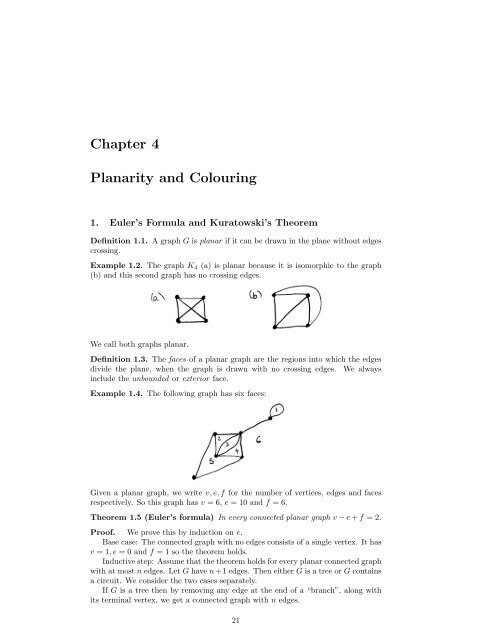You also want an ePaper? Increase the reach of your titles
YUMPU automatically turns print PDFs into web optimized ePapers that Google loves.
Chapter 4Planarity and Colouring1. Euler’s Formula and Kuratowski’s TheoremDefinition 1.1. A graph G is planar if it can be drawn in the plane without edgescrossing.Example 1.2. The graph K 4 (a) is planar because it is isomorphic to the graph(b) and this second graph has no crossing edges.We call both graphs planar.Definition 1.3. The faces of a planar graph are the regions into which the edgesdivide the plane, when the graph is drawn with no crossing edges. We alwaysinclude the unbounded or exterior face.Example 1.4. The following graph has six faces:Given a planar graph, we write v, e, f for the number of vertices, edges and facesrespectively. So this graph has v = 6, e = 10 and f = 6.Theorem 1.5 (Euler’s formula) In every connected planar graph v − e + f = 2.Proof. We prove this by induction on e.Base case: The connected graph with no edges consists of a single vertex. It hasv = 1, e = 0 and f = 1 so the theorem holds.Inductive step: Assume that the theorem holds for every planar connected graphwith at most n edges. Let G have n+1 edges. Then either G is a tree or G containsa circuit. We consider the two cases separately.If G is a tree then by removing any edge at the end of a “branch”, along withits terminal vertex, we get a connected graph with n edges.21













